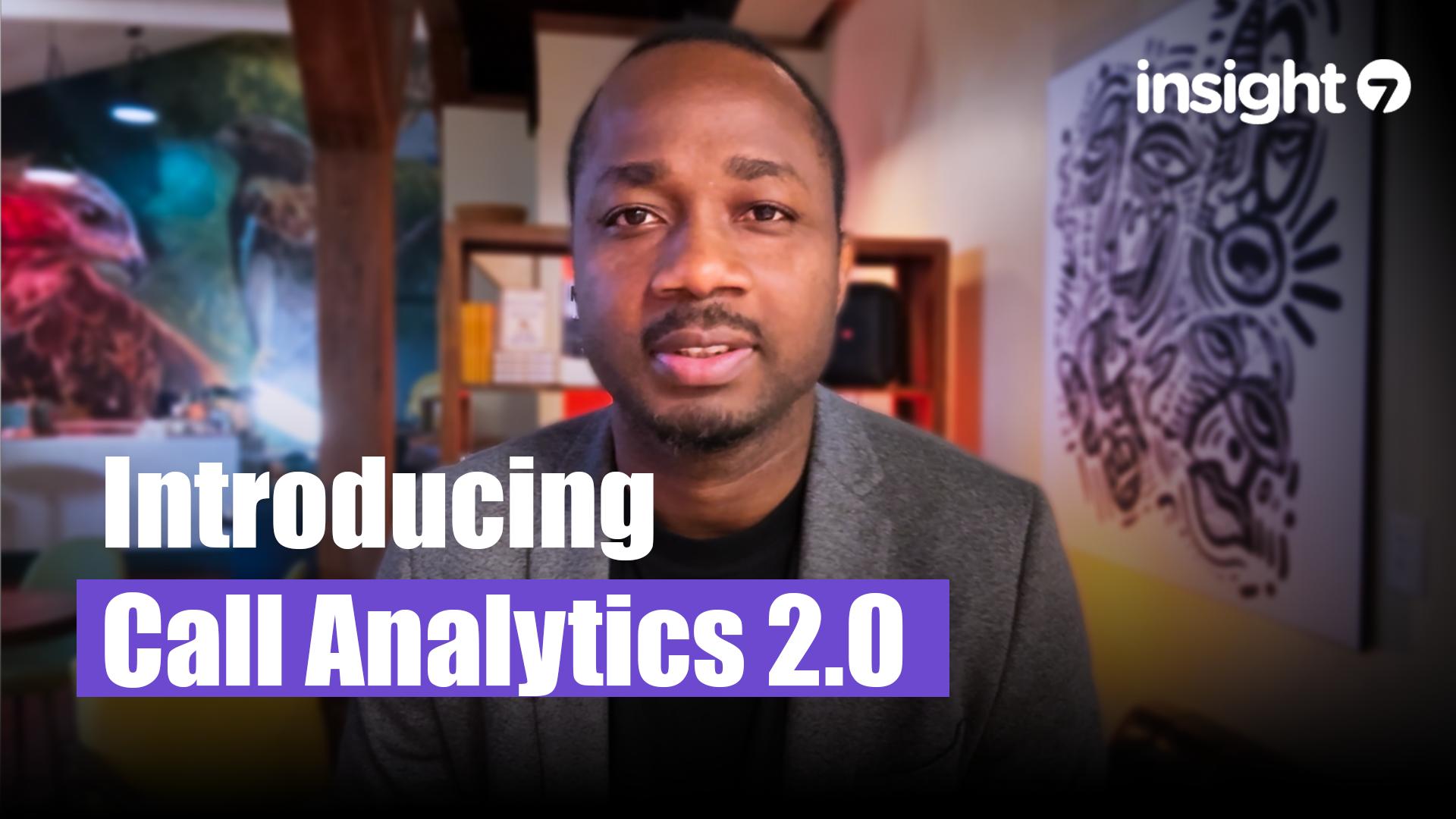How Call Analytics Tracking Improves Compliance and Risk Management
-
Bella Williams
- 10 min read
In today's fast-paced business environment, compliance and risk management have become paramount for organizations across various industries. With increasing regulatory scrutiny and the potential for hefty penalties, companies must ensure they adhere to compliance standards while effectively managing risks. Call analytics tracking emerges as a powerful tool in this landscape, offering insights that not only enhance compliance but also mitigate risks associated with customer interactions. By leveraging call analytics, organizations can transform customer conversations into actionable insights, ultimately leading to improved decision-making and operational efficiency.
What Problem Does Call Analytics Tracking Solve?
Many organizations struggle with a lack of visibility into customer interactions, which can lead to compliance breaches and increased risk exposure. Traditional methods of compliance monitoring, such as manual note-taking and random sampling of calls, often fall short in providing a comprehensive view of customer interactions. These outdated approaches can result in missed compliance issues, ineffective training, and a failure to adapt to evolving regulations.
The pressures of regulatory changes, heightened customer demands for transparency, and increased competition make the need for effective compliance management more critical than ever. Organizations must adapt to these external pressures by implementing robust solutions that can keep pace with the complexities of compliance requirements.
Strategic Framework for Call Analytics Tracking
Call analytics tracking utilizes advanced technologies to analyze customer interactions in real-time, providing organizations with a clear framework for compliance and risk management. Unlike traditional methods that rely on random sampling, call analytics can analyze 100% of calls, ensuring that no compliance issues go unnoticed.
This AI-driven approach unlocks new possibilities, such as real-time compliance monitoring, automated risk assessments, and proactive training insights. By continuously analyzing customer interactions, organizations can stay ahead of compliance requirements and effectively manage risks.
What Becomes Possible With Call Analytics Tracking?
- Real-time Compliance Monitoring → Reduction in non-compliance incidents through immediate identification of issues.
- Automated Risk Assessments → Faster identification of potential risks, allowing for timely interventions.
- Proactive Training Insights → Improved employee performance and adherence to compliance standards through targeted coaching.
- Enhanced Reporting Capabilities → Easier audits and regulatory compliance with comprehensive reporting tools.
- Sentiment Analysis for Customer Interactions → Better understanding of customer concerns and compliance issues, leading to improved customer satisfaction.
Why Are Organizations Betting Big on Call Analytics Tracking?
Organizations are increasingly adopting call analytics tracking due to the growing regulatory scrutiny and the need for better risk management. By implementing call analytics, businesses can eliminate pain points such as missed compliance issues, inefficient training processes, and poor customer experiences. The value of call analytics lies in its ability to provide speed, transparency, and audit readiness, ultimately leading to a strong return on investment.
Call Analytics Tracking Data Infrastructure and Requirements
To effectively implement call analytics tracking, organizations need to gather various types of data, including call transcripts, CRM logs, compliance checklists, and quality assurance scores. The diversity of data sources enhances the accuracy and trustworthiness of compliance monitoring, allowing organizations to gain deeper insights into their compliance posture.
Strong data foundations translate to stronger insights and compliance assurance, enabling organizations to make informed decisions based on comprehensive data analysis.
How Does Call Analytics Tracking Work Behind the Scenes?
- Gather raw inputs (calls, meetings, customer interactions).
- Convert audio into structured text for compliance analysis.
- Spot sentiment, objections, compliance breaches, or patterns.
- Apply historical data to improve predictions and compliance checks.
- Deliver insights in real-time dashboards, alerts, or coaching prompts.
- Track impact, refine models, and close the loop for continuous improvement.
High-Impact Call Analytics Tracking Use Cases
- Detecting Compliance Breaches → Identify and address issues in real-time, reducing the risk of penalties.
- Improving Training Effectiveness → Tailored coaching based on specific compliance needs enhances employee performance.
- Monitoring Customer Sentiment → Resolve compliance-related customer concerns faster, improving overall satisfaction.
- Strengthening Risk Management → Proactively identify and mitigate risks before they escalate.
- Enhancing Audit Readiness → Streamlined reporting for regulatory compliance simplifies the audit process.
How Do You Choose the Right Tool for Call Analytics Tracking?
When selecting a call analytics tracking tool, organizations should prioritize features such as compliance reporting, integrations with compliance management systems, multilingual support, and real-time dashboards. AI-powered solutions offer significant advantages over manual or legacy systems, particularly in their ability to provide continuous compliance monitoring and scalable risk detection.
Quick Comparison:
| Feature | Modern AI Call Analytics | Traditional Methods |
|---|---|---|
| Compliance Monitoring | Continuous, automated | Periodic checks |
| Risk Detection | AI-driven, scalable | Manual oversight, limited |
| Reporting | Instant, comprehensive | Time-consuming |
| Coverage | 100% of calls | Sampled only |
Common Call Analytics Tracking Implementation Challenges
Organizations may face several challenges when implementing call analytics tracking, including:
- Dirty or incomplete data leading to unreliable compliance insights.
- Lack of team alignment on compliance goals, resulting in inconsistent practices.
- Over-automating without human oversight, leading to false positives.
- Not integrating into existing compliance frameworks or workflows, hindering effectiveness.
How Do You Get Started With Call Analytics Tracking?
To successfully implement call analytics tracking, organizations can follow this practical roadmap:
- Connect to your CRM and call recording system.
- Import historical conversations to establish compliance baselines.
- Set up role-based dashboards for compliance teams.
- Train and calibrate with real compliance data.
- Launch pilots in high-risk areas to test effectiveness.
- Expand adoption, review regularly, and optimize compliance strategies.
Excellence Standards for Call Analytics Tracking Programs
To achieve the highest ROI in compliance and risk management, organizations should adhere to best practices such as:
- Regularly reviewing compliance insights to ensure they remain relevant.
- Analyzing a sufficient volume of data to strengthen predictive accuracy for compliance monitoring.
- Balancing AI-driven outputs with human judgment in compliance decisions to avoid over-reliance on technology.
How Do You Track Results of Call Analytics Tracking?
Core success metrics for evaluating the effectiveness of call analytics tracking include:
- Reduction in compliance incidents, indicating improved adherence to regulations.
- Enhanced training effectiveness and employee compliance, leading to better performance.
- Time saved in compliance reporting, streamlining the audit process.
- Sentiment/NPS correlations related to compliance issues, providing insights into customer perceptions.
- Forecasting accuracy for potential compliance risks, enabling proactive management.
The golden rule is that the value of call analytics tracking lies not just in the analytics itself, but in the improved compliance actions teams take as a result.
Questions Leaders Often Ask About Call Analytics Tracking
- What exactly is this technology and how does it work for compliance?
- How is it better than traditional compliance monitoring methods?
- Can we integrate it with existing compliance management systems?
- How much call data do we need before compliance insights are reliable?
- Is it safe, compliant, and secure for regulated industries?
Wrapping It Up
As organizations navigate the complexities of compliance and risk management, call analytics tracking stands out as a vital tool for enhancing operational efficiency. The right platform can transform customer conversations into measurable compliance outcomes, ensuring that businesses remain competitive and compliant in an ever-evolving landscape. Leaders are encouraged to explore next steps, such as demos, pilots, or platform comparisons tailored to their specific compliance needs.
Additional Resources
For further insights, organizations can refer to relevant case studies, white papers, or guides on implementing call analytics for compliance and risk management.
Troubleshooting Common Issues in Call Analytics Tracking
Organizations may encounter common issues when implementing call analytics, such as data privacy concerns, integration challenges, and ensuring user adoption. Addressing these issues proactively can help organizations maximize the benefits of call analytics tracking while maintaining compliance and managing risks effectively.







